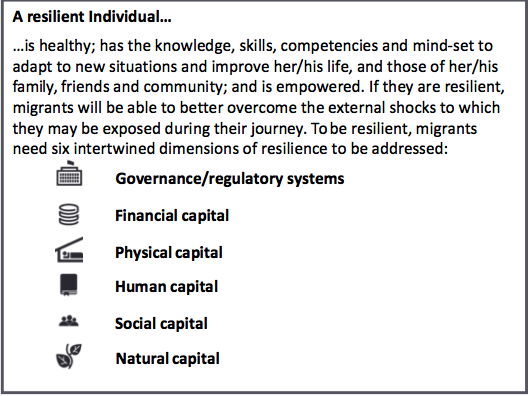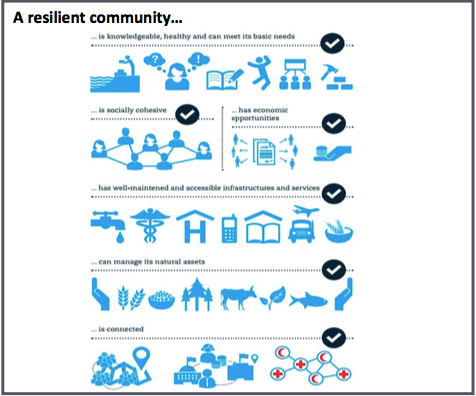Annex C – Migration trends and community resilience
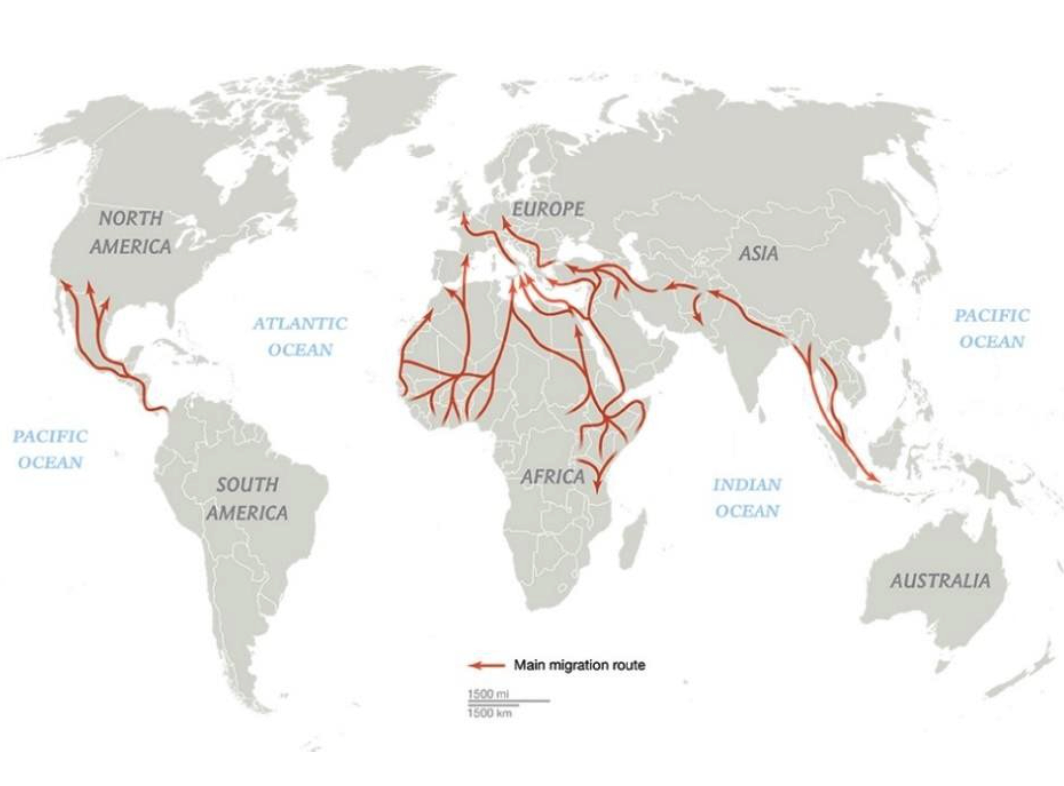
Migration is globally increasing in absolute terms but has remained stable relative to the global population. According to the UNFPA, the number of international migrants worldwide reached 244 million people in 2015, representing a 44 per cent increase since 2000 and a five per cent increase since 2013. Although the number of international migrants has increased in absolute terms, the share of international migrants in the world population has stayed constant at around three per cent of the global population.1 Some of the main drivers of international migration around the world include the escape from conflict and persecution, and the search for economic opportunity.
Although most countries of destination are in the global north, South- South migration is as common as South-North migration. South-South migrants comprised 36 per cent (82.3 million people) of migrant stocks in 2013 whereas South-North migrants accounted for 35 per cent of the total migrant stock (81.9 million people).2 North-North migrants accounted for 23% of the total stock and North-South migrants for six per cent. Australia, Canada, France, Germany, Russia, Saudi Arabia, Spain, UK, UAE, USA and UAE account for almost half of all international migrants.3
Global migration patterns are complex and a multitude of migratory paths are constantly being formed and reformed. However, five important migrant trails account for significant global flows. These are (i) the Eastern Mediterranean trail; (ii) the Mediterranean Sea trail; (iii) the Central American trail; (iv) the southeast Asian trail; (iv) the South African trail. These trails are described in more detail below.
- International Organization for Migration, Global Migration Trends: An Overview (2014).
- UN-DESA (2013).
- Ibid. The U.S. is the first destination country (45.8 million in 2013), followed by the Russian Federation (11 million), Germany (9.8 million), Saudi Arabia (9.1 million), the United Arab Emirates and the United Kingdom (7.8 million each), France (7.5 million), Canada (7.3 million), Australia and Spain (6.5 million each).
- Maps from: M. Chwastyk and R. Williams, National Geographic, at: http://news.nationalgeographic.com/2015/09/150919-data-points-refugees-migrants-maps-human-migrations-syria-world.
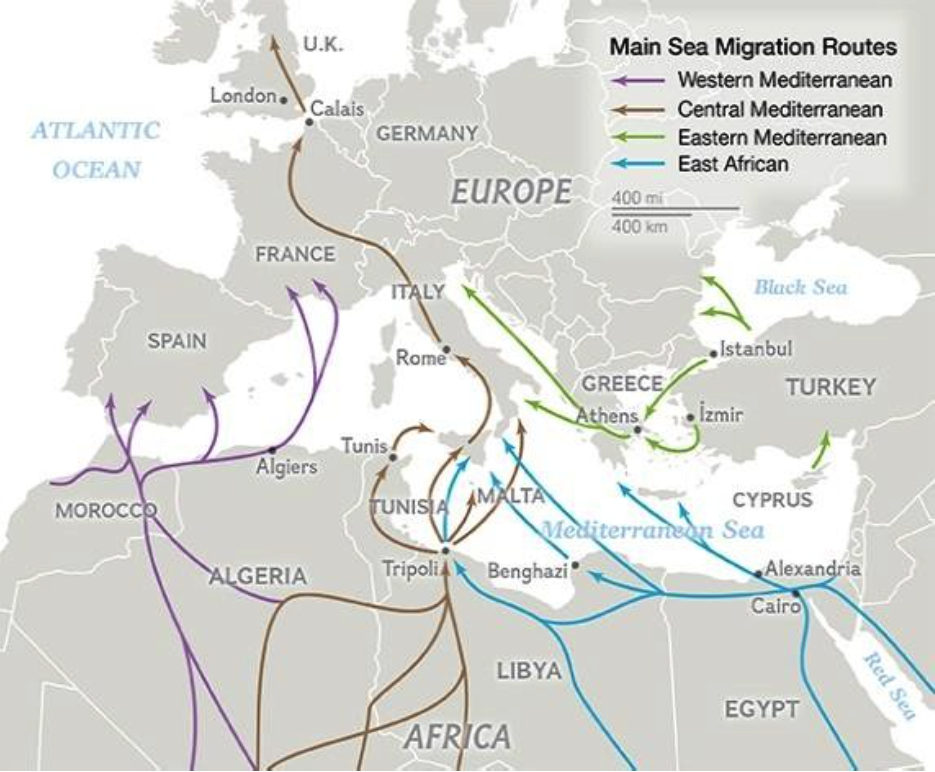
The Eastern Mediterranean trail describes the network of travel paths used by migrants from the Middle East and North Africa through Eastern Europe as well as through Greece and Italy. It has long been used by migrants to cross through Turkey into the European Union and is the most common route for Syrian migrants. Migrants use both the sea route to the Aegean islands as well as the air route directly to European cities from Istanbul.1 Entry into Greece via the land border has become an increasingly heavily used trail. The vast majority of migrants arrive on several Greek islands, primarily Lesbos.2 In 2015, some 885,000 migrants arrived in the EU via the Eastern Mediterranean route, with a peak of 216,000 migrants arriving in October 2015.3 There were 278 deaths on the route in 2015.

The Mediterranean Sea trail describes the network of travel paths used by migrants across the Mediterranean Sea both from the west into Spain and from the centre through Italy, particularly through Lampedusa. It has long been the route of choice for African migrants entering Europe. The trail through Spain has been a high profile path for years. However, cooperation between Spain and Morocco has kept numbers on this trail comparatively low.4 However, Syrian migrants have increasingly started to utilize this trail more frequently and accounted for the biggest share of detections along the route in 2015. The trail through Italy has nevertheless remained under intense migratory pressure with 154,000 migrant arrivals in 2015.5 Eritreans, Nigerians and Somalis accounted for the biggest share of migrants along this trail. The Arab Spring in 2011, which caused the overthrow of the Gaddafi regime in Libya, also increased the level of migratory pressure on this trail.
- Frontex
- www.iom.int/news/mediterranean-migrant-flows-iom-update.
- Matthew Chwastyk and Ryan Williams, National Geographic, http://news.nationalgeographic.com/2015/09/150919-data-points-refugees-migrants-maps-human-migrations-syria-world.
- Frontex.
- Frontex.
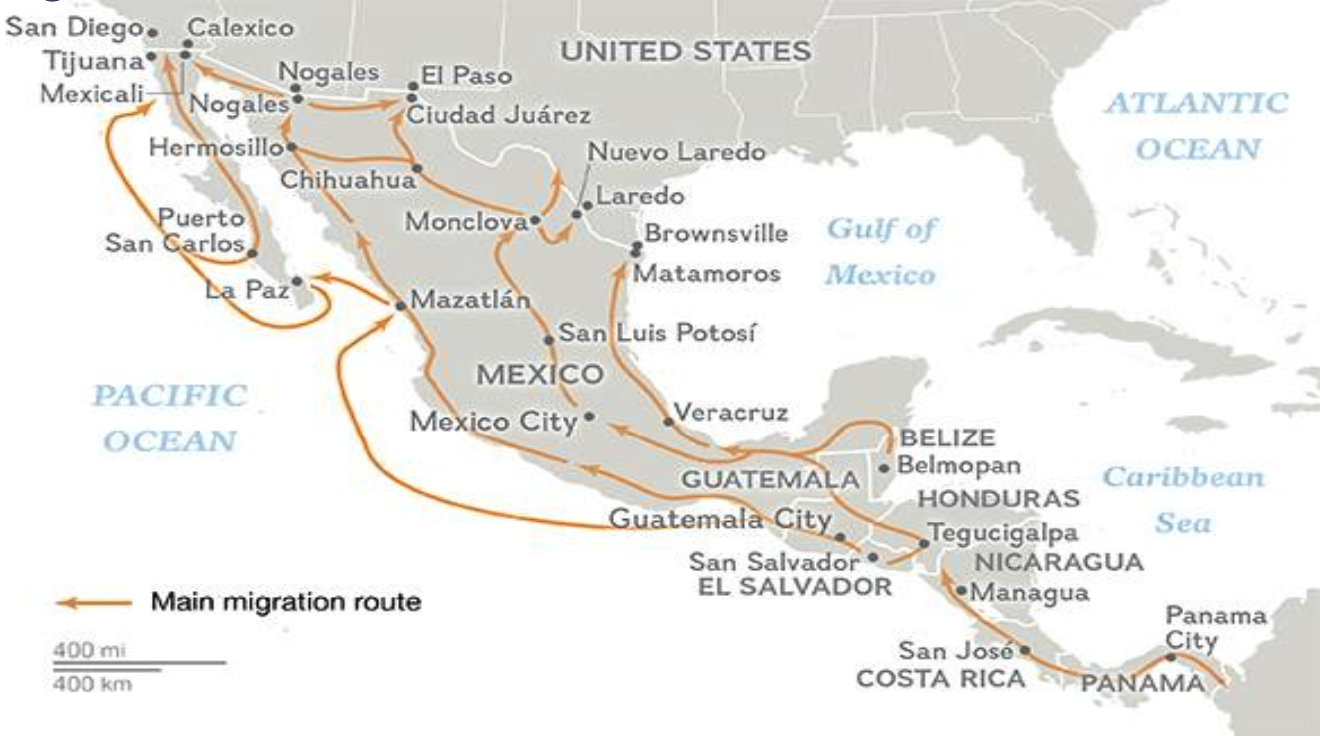
The Central American trail describes the network of paths from LatinAmerica through Central America and up through Mexico into the United States. There are four major routes in the Americas: (i) From Latin America and the lower part of Central America upward through Nicaragua, Costa Rica and Panama; (ii) to Argentina from Bolivia, Paraguay and Caribbean islands*; (iii) Inter_Caribbean (especially Haiti to Dominican Republic); (iv) through the Andean Zone (Ecuador_Colombia_Bolivia and the trail commonly used by Cubans to travel to the United States). Each year, as many as 500,000 migrants from Central America use freight trains colloquially known as ‘La Bestia’ (‘The Beast’) through Mexico, on their journey to the United States.1
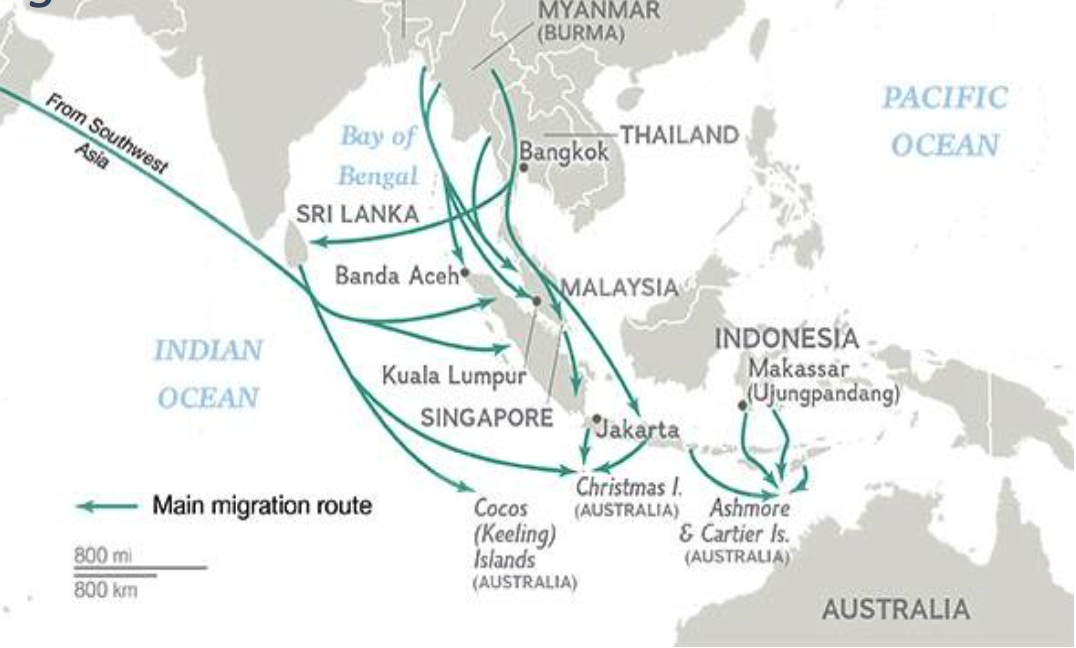
The Southeast Asian trail describes the network of paths through Southeast Asia and the Asia`Pacific region – particularly towards Thailand, Indonesia and Malaysia. Political upheaval, restrictive migration policies, and a lack of legal frameworks for refugees have made Southeast Asia increasingly dangerous for migrants. More than one million Muslim Rohingya refugees have fled political repression in Myanmar. Human trafficking, forced labour and other abuses are also rife in the region, according to the UN. Many of the migrants are moving in search of better jobs.
*Not depicted in Figure 4.
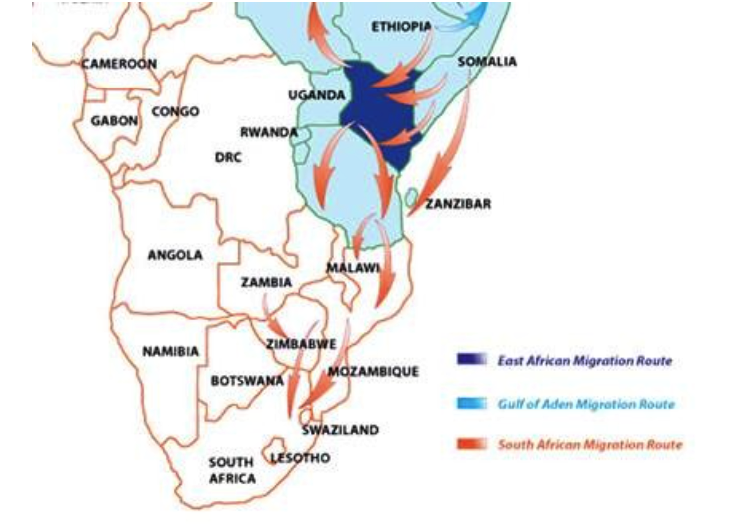
The South African Migration trail describes the network of paths through East Africa downwards towards South Africa. Migrants travel downwards through Kenya, Uganda, Tanzania, Malawi, Zimbabwe, Botswana and Zambia. South Africa is a popular destination for labour emigrants from throughout East Africa, both regular and irregular.1 Additionally, the East African corridor is used as a smuggling route for migrants into South Africa.2 The route is also used by fleeing asylum seekers who seek to enter the country. Between 2006 and 2012, South Africa was the highest recipient of asylum seekers of all countries in the world, peaking in 2009 with 222,300 asylum claims.
The IFRC supports renewed efforts to address the root causes of migration. Persons should not be forced into risking their lives and those of their families to flee even greater risks in their homes and communities. The determinants and consequences of migration flows, whether they are rooted in armed conflict, poverty, social strife, political turmoil, economic hardships or ecological deterioration, are incredibly complex. Social and economic distress and the lack of services and opportunities for development constitute push factors for migration and have informed the Red Cross Red Crescent’s approach in reducing the underlying causes of vulnerability through its work along the relief-to-development continuum. Of course, building resilient societies should be an end in itself, not just a means to avoid migration. If migration concerns inspire greater investment in local resilience this will be a very positive outcome of the present situation, but resilience efforts should remain holistic in their approach rather than steered toward keeping people planted in their homes.
Although there is a need to build the resilience of communities affected by migration at origin, in transit and at destination, this report focuses on initiatives that help build the resilience of individual migrants.

